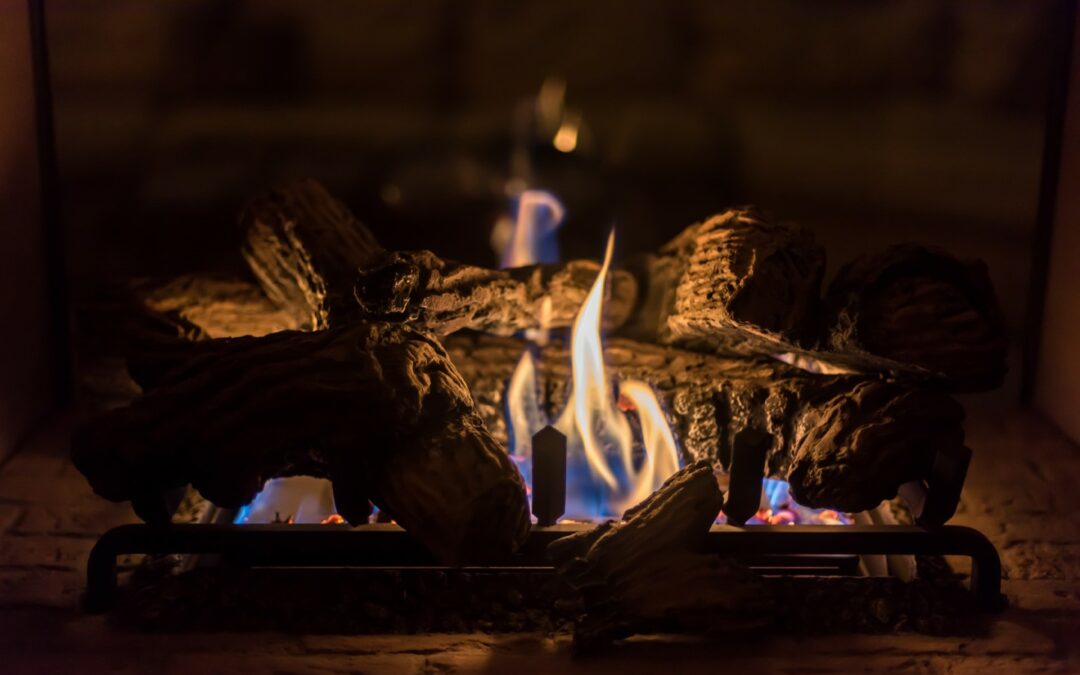One of the upsides to spending more time at home this winter is the opportunity to relax and enjoy the coziness and warmth of your home’s fireplace. Then again, if yours is a traditional wood-burning fireplace, the idea of a fire might be something you dread instead of desire.
Let’s be honest: While the thought of a crackling wood-burning fire might be nice, the reality is it’s a hassle. That’s why so many Georgia homeowners are converting their fireplaces to fuss-free natural gas.
More Georgia homeowners are converting their fireplaces to fuss-free natural gas.
“It’ll mean the end of buying, stacking and hauling wood. And no more dirty ash to clean up,” said Savannah Chandler, communications coordinator for Walton Gas.
Gas fireplaces start with the push of a button or flick of a switch and don’t need tending or manual reloading of fuel. They don’t create soot or ash, and they can be shut off when you leave the room without concern about stray embers or coals starting a house fire. Plus, some types of gas fireplaces heat far more efficiently than their wood-burning counterparts.
An easy conversion
If you already have a conventional masonry fireplace, converting it to a natural gas fireplace is surprisingly easy. The conversion can be accomplished by simply adding a gas log set or by installing a self-contained gas insert unit with its own chimney.
You’ll need the assistance of some professionals for a smooth conversion.
Before doing any reconfiguring of your fireplace, you’ll want to have it inspected by a professional, advise the experts at Chimney Solutions of Alpharetta. This will uncover any damage you don’t know about and let you make repairs to ensure it’s suitable for gas.
WALTON GAS TIP:
Do not proceed with a gas conversion without a professional inspection of your masonry fireplace to ensure the chimney is structurally sound to exhaust the byproducts of burning gas.
Converting a traditional masonry fireplace to gas starts with bringing gas piping to the fireplace (usually from below) and up into the firebox. This can be added by a plumber, HVAC contractor or professional gas fireplace installer.
Next, an electrician installs the electrical connection for the gas fireplace’s electronic pilot light and controls. You may also wish to install a wall switch for turning the fire on and off.
Choose: logs or insert
Gas-burning systems for conversion come in two basic types: log sets and inserts.
Log sets are the simpler and cheaper option. But they are also less energy efficient. They consist of just a few components: artificial logs (and other real-fire simulations), a gas burner and electrical controls.
Logs are available in both vented and vent-free sets. If ambiance is your chief objective, vented logs produce a more realistic fire appearance. Non-vented logs supply more heat, however.
Vented sets are the most common choice among Georgia homeowners. Vented logs use the existing masonry chimney to exhaust the byproducts of burning gas.
As the name implies, vent-free log sets do not require a chimney. The byproducts of gas combustion are exhausted into the house. There is much debate about whether vent-free fireplaces are good for indoor air quality, so Walton Gas recommends that you become educated about the pros and cons of this option before making a selection.
Gas fireplace inserts are composed of metal boxes that contain a gas burner, artificial logs, controls and features, such as heating channels and blower fans, to send heat into the room.
Most inserts are ventilated with a dual-chamber direct vent. One chamber draws air from outdoors for the fire combustion. The other exhausts the byproducts from the fire.
Direct-vent fireplaces can provide energy-efficient warming. Because the combustion air is drawn from the outdoors, there is no loss of heated indoor air for combustion. The front of the fireplace typically is sealed with glass, so there is no loss of indoor air going up the exhaust vent, either. This makes direct-vent inserts about 70 to 85 percent efficient — much better than vented log sets or traditional wood-burning fireplaces.
Converting from a wood-burning fireplace to one fueled by natural gas can be accomplished in a day or less in the average home. If you hurry, you and your loved ones could be celebrating the upcoming holidays in front of a beautiful natural gas fire — no fuss required.
